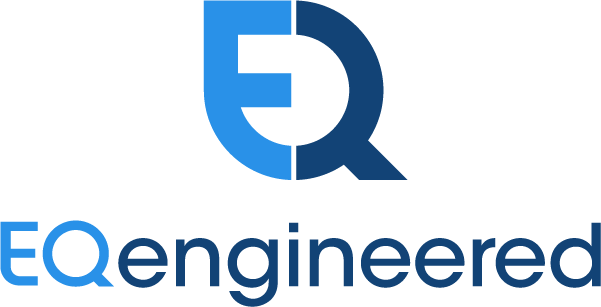Building a Scalable Data and Analytics Operating Model for Enterprise Digital Transformation by Mark Hewitt
In the contemporary business landscape, digital transformation has become imperative for enterprises aiming to maintain competitiveness and foster innovation. Central to this transformation is the evolution of data engineering operations, which necessitates a well-structured Data and Analytics Operating Model (D&AOM). This model serves as a strategic framework, aligning data initiatives with business objectives to harness data-driven insights effectively.
Objectives of a Data and Analytics Operating Model
The primary objective of a D&AOM is to create a cohesive structure that integrates data processes, technologies, and governance to support informed decision-making. Key objectives include:
Strategic Alignment: Ensuring that data initiatives are directly linked to the organization's strategic goals, thereby driving value and competitive advantage.
Operational Efficiency: Streamlining data workflows to enhance productivity and reduce redundancies within data engineering processes.
Data Governance and Quality: Establishing robust policies to maintain data integrity, security, and compliance across the enterprise.
Scalability and Flexibility: Designing the data architecture to adapt to evolving business needs and emerging technologies seamlessly.
Core Elements of the Data and Analytics Operating Model
An effective D&AOM comprises several foundational components:
Data Governance Framework: This encompasses the policies, standards, and procedures that ensure data is managed consistently and responsibly. It addresses data ownership, quality controls, privacy regulations, and ethical usage.
Data Architecture: A modern data architecture supports the ingestion, storage, processing, and analysis of diverse data types. It includes:
Data Lakes: Central repositories that store raw data in its native format, accommodating structured and unstructured data.
Data Warehouses: Structured storage solutions optimized for query performance and analytics.
Data Integration Tools: Mechanisms for extracting, transforming, and loading (ETL) data from various sources into centralized systems.
Analytics and Business Intelligence (BI) Tools: Platforms that facilitate data visualization, reporting, and advanced analytics, enabling stakeholders to derive actionable insights.
Data Management Processes: Standardized procedures for data acquisition, cleansing, transformation, and enrichment to ensure data is accurate and ready for analysis.
Talent and Organizational Structure: A skilled workforce and a clear organizational design are crucial. This includes:
Data Engineers: Professionals responsible for building and maintaining data pipelines and infrastructure.
Data Scientists: Experts who analyze complex data sets to extract insights and build predictive models.
Data Stewards: Individuals overseeing data governance and quality assurance.
Technology Infrastructure: The underlying hardware and software that support data storage, processing, and analytics, including cloud platforms, on-premises servers, and hybrid solutions.
Key Recommendations for Implementing the D&AOM
To successfully develop and implement a D&AOM, enterprises should consider the following recommendations:
Conduct a Comprehensive Assessment: Begin by evaluating the current data landscape, identifying existing capabilities, gaps, and areas for improvement. This assessment should cover data sources, infrastructure, skill sets, and governance practices.
Define Clear Data Strategies: Establish a data strategy that aligns with business objectives. This includes setting clear goals for data initiatives, determining key performance indicators (KPIs), and outlining the desired outcomes of data projects.
Adopt a Phased Implementation Approach: Implement the D&AOM in manageable phases, allowing for iterative development and continuous improvement. This approach enables the organization to adapt to challenges and refine processes effectively.
Invest in Scalable Technologies: Leverage modern, scalable technologies that can grow with the organization's needs. Cloud-based solutions, for instance, offer flexibility and scalability, accommodating increasing data volumes and complex analytics requirements.
Enhance Data Literacy Across the Organization: Promote a culture of data literacy by providing training and resources to employees at all levels. Empowering staff with data knowledge fosters better decision-making and encourages the adoption of data-driven practices.
Establish Robust Data Governance: Develop and enforce data governance policies that address data quality, security, privacy, and compliance. Clear guidelines ensure consistent data management and build trust in data assets.
Foster Cross-Functional Collaboration: Encourage collaboration between IT, data teams, and business units. Cross-functional teams can provide diverse perspectives, ensuring that data solutions meet the practical needs of various departments.
Monitor and Evaluate Performance: Regularly assess the effectiveness of the D&AOM through KPIs and feedback mechanisms. Continuous monitoring allows for timely adjustments and ensures that the model remains aligned with business objectives.
Take Aways
Developing a robust Data and Analytics Operating Model is a critical step for enterprises undergoing digital transformation. By focusing on strategic alignment, incorporating essential components, and adhering to key implementation recommendations, organizations can effectively harness the power of their data. This structured approach not only enhances decision-making and operational efficiency but also positions the enterprise to adapt to future challenges and opportunities in the ever-evolving digital landscape.

